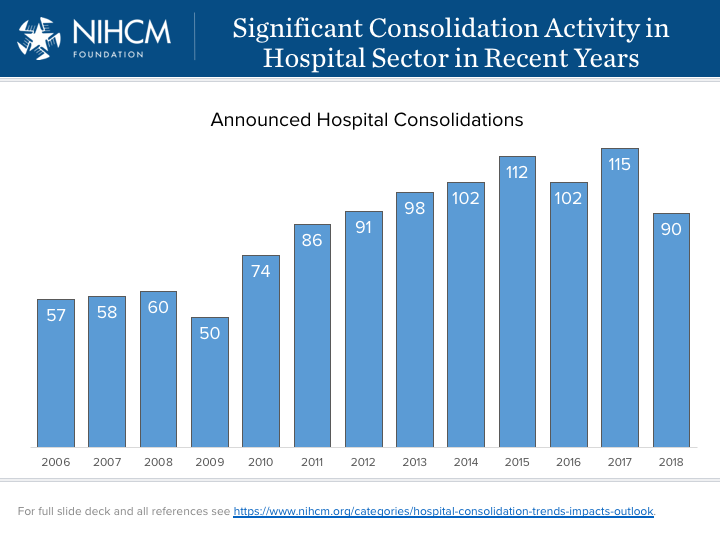on
Verdure
- Get link
- X
- Other Apps
One trend in recent years is how many hospitals are being purchased by large regional or national hospital chains. An April 2019 slide deck from the NIHCM Foundation shows this trend graphically.

A paper by Hsieh and Rossi-Hansberg (2019) provide some aggregate data as well as a case study from the Boston area.
Four decades ago, about 85% of hospitals were single establishment non-profits. Today, more than 60% of hospitals are owned by for-profit chains or are part of a large network of hospitals owned by an academic institution…As an example of the former, consider the Steward Health Care Group. This company was created by the Cerberus private equity fund in 2010 when it purchased 6 Catholic hospitals in Boston….Cerberus’ goal was to create the “Southwest Airlines of healthcare” by figuring out and codifying best practices and implementing these practices over a large scale… By 2019, Steward had expanded from its original hospitals in Boston to 36 hospitals located in 9 states and Malta.
Hsieh and Rossi-Hansberg (2019)
Is big beautiful? What is the advantage of such large changes?
One potential economy of scale is the ability to better leverage new technology. For instance, Steward Health has a remote intensive care unit (ICU). The remote ICU provides live video feeds, real-time readings from instruments, scans and lab results. Steward software is used to identify alarming trends. By pooling data across hospitals, this approach has the potential to be more effect.
The Hsieh and Rossi-Hansberg (2019) paper notes that this is part of a bigger industrial trend towards increased consolidation in the services sector of the economy more generally.
…new technologies have enabled firms that adopt them to scale production over a large number of establishments dispersed across space. Firms that adopt this technology grow by increasing the number of local markets that they serve, but on average are smaller in the markets that they do serve. Unlike Henry Ford’s revolution in manufacturing more than a hundred years ago when manufacturing firms grew by concentrating production in a given location, the new industrial revolution in non-traded sectors takes the form of horizontal expansion across more locations.
Source:
Comments
Post a Comment